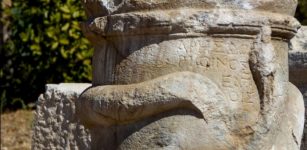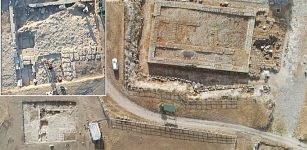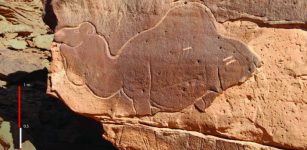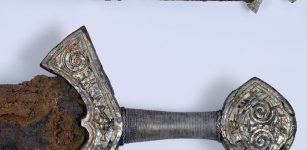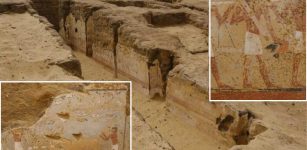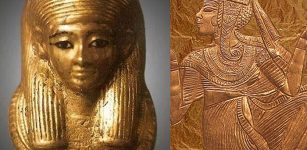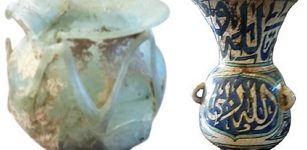Ancient Egyptian Wooden Box Inscribed For Pharaoh Amenhotep II Is Now Restored
AncientPages.com - The 3,400-year-old and rare Egyptian artifact was pieced together by a team of researchers at National Museums Scotland (NMS), who recently received some missing fragments of the treasure.
The box - made from cedar, ebony, ivory and gold -was discovered in the 1850s, but it long remained in a fragmentary state.
The box is decorated with the image of Bes, the Egyptian dwarf god, a grotesque figure who protects against snakes, misfortune and evil spirits; the box is also said to bear a resemblance to those found in Tutankhamun’s tomb.

The 3,400-year-old wooden box, inscribed for Pharaoh Amenhotep II was in a fragmebtary state for the last 160 years. Image credit: PA/NMS
Now, for the first time after 160 years, there are clues regarding the artifact's origin and design.
It is believed that this beautiful box (similar were often found in ancient Egyptian tombs), was probably used in the royal palace to hold cosmetics or expensive perfumes and likely belonged to a member of the king's family.
See also:
Evidence suggests the box was originally excavated in a tomb belonging to a group of 10 princesses, including daughters of Pharaoh Thutmose IV, the son of Pharaoh Amenhotep II, the seventh Pharaoh of the 18th dynasty of Egypt, who ruled from 1427 to 1401 BC.

The box is decorated with the image of Bes, a symbol of good luck and help ward off evil spirits, the box is also said to bear a remarkable resemblance to those found in Tutankhamun’s tomb. Image credit: PA/NMS
"Palace objects from ancient Egypt are extremely rare, so it's very exciting for us to be able to confirm this object's royal connections," said Dr Margaret Maitland, senior curator of the ancient Mediterranean collection at NMS.
"Not only does the acquisition of the fragments fill a literal gap in the box, it fills gaps in our understanding of its story."
AncientPages.com

